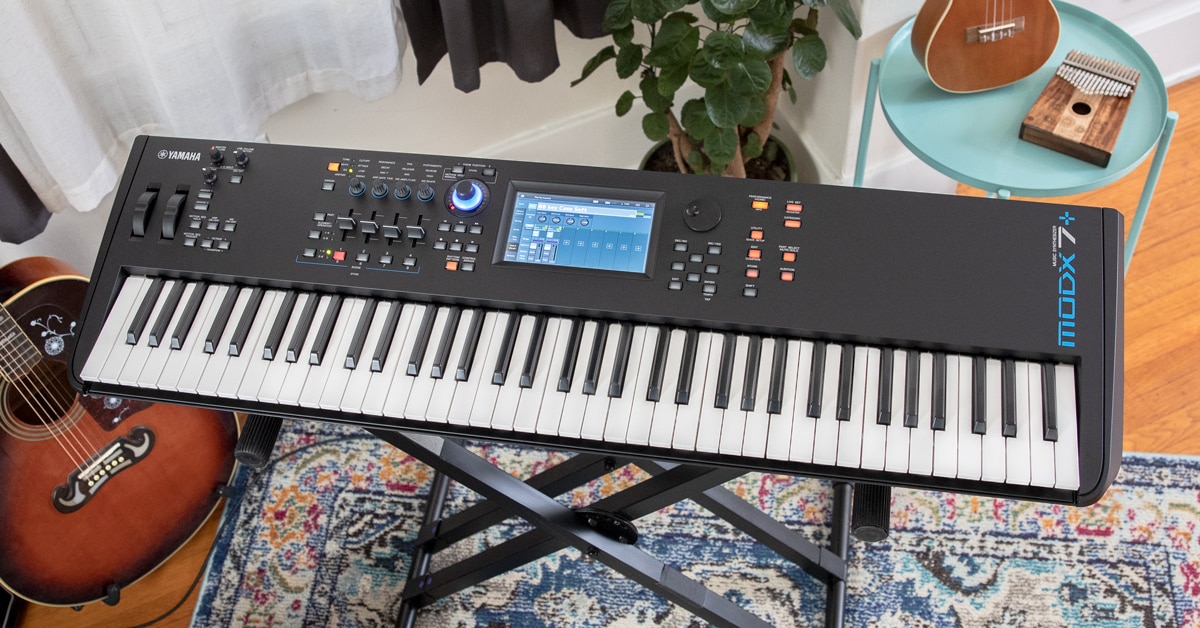The cleverly designed Yamaha MODX+ series packs the technology of the top-of-the-line MONTAGE, but in a lightweight chassis. With each of its three size options (the MODX6+, MODX7+ and MODX8+, built for synthesists, keyboardists and pianists, respectively), it delivers a myriad of sonic customization possibilities—no matter the application. A turn of its Super Knob can control dozens of parameters simultaneously, while its increased 1.75GB of user sample memory makes way for some seriously impressive sounds. Plus, there are thousands of free sounds available to MODX+ players on Yamaha’s social sound sharing network, Soundmondo. Offering up a generous selection of connections, including an A/D input, MODX+ can easily control the sound of virtually any existing gear in your setup, from modular synths to guitars.
We sat down with Blake Angelos, Yamaha’s senior product specialist for synths, to key into some of the exciting, innovative features—as well as some very helpful and creatively stimulating workflow ideas—on the MODX+.
The HUB: First and foremost, can you break down for us the key differences between the three MODX+ models?
Blake Angelos: We tend to break it up into three different types of players: synthesists, keyboardists and pianists. A synthesist is more into tweaking the sounds and creating their own sounds. So, for that player we recommend the MODX6+. It’s the smallest one with 61 notes, but it has all the features. And just to be clear, all three models are identical inside. For a keyboardist, they’re going to need a little bit more keys, so the MODX7+ is ideal for that. It's very lightweight. And then, the MODX8+ has the graded hammer action. With that action, it’s going to be heavier in the low end and lighter in the high end, like a grand piano action, where the hammers are different sizes and are going to feel a little different. Now, having been making pianos for 120 years, we kind of know how that should feel. So, when you play MODX8+, we have this great Yamaha action that is much more dialed in for the pianist out there. And even with that, it’s lightweight. It’s less than 32 pounds. So, still lightweight, but 88 weighted.
The HUB: It’s interesting that you bring all of that up. People sometimes assume that they should buy based on skill, but it’s really about what you’re playing. If you’re going to be playing a lot of organ sounds, for example, you probably don’t want that weighted piano feel. You need that lighter touch.
BA: That's exactly right.
One type of player that I didn’t mention is guitarists. We have lots of guitar players that buy synths as well. It’s not even just that they want a great synthesizer, but they realize they can run their guitar into the A to D inputs and use MODX+ as a really cool effect processor, with real-time control of the effects. That Super Knob has very deep control over the two effects that are assigned to the A to D input. So, you can control all of the parameters of a flanger with the Super Knob or the mod wheel. You can automate that as well with something like a Motion Sequence, and play your guitar through it, and have these cool textures using the effects just for the A to D input. You still have all the synth stuff as well, but that A to D input is really powerful, and can be automated in the same way that the synth sounds can be. With just the effects, up to 25 different parameters can be automated simultaneously with that system. It's deep. It's a great way to use it.
The HUB: I want to dig into the sound design capabilities of MODX+. Can you tell us a little bit about the level of real-time control you have over sounds?
BA: Oh, yeah. That's one of the cool things about it—each of the parts has up to 16 different control points that you can assign for shaping your sound. And what you can assign are very, very deep synthesizer controls, well outside of the standard MIDI specification. Standard MIDI controllers aren’t going to get you control of things like operator level, individual operator rate or the rate of one of the envelopes, for example. But you can with our control interface with the Super Knob.
The Super Knob is really, really cool. Let’s take two things. One of them would be that as you turn the Super Knob clockwise, it closes the filter, instead of opening it. At the same time—let's say that the Super Knob is also assigned to reverb—it increases the reverb time as you turn it clockwise. So, the filter closes as the reverb time gets bigger. Or maybe you assign it to two different filters, and one will close and the other will open as you turn it. So, even though the movement of Super Knob is going clockwise, it can go in different motions as you move it. It has something like 26 preset curves, and you can create up to 32 of your own user curves for how the Super Knob motion moves as you turn it. Imagine having that kind of power—things opening, things closing—really all sorts of stuff going on with the synth engine itself. This is far more than just adjusting MIDI C #74, which is cutoff frequency or CC #71, which is resonance. Super Knob is giving you deep synthesis control over individual parameters.
On top of all that stuff we just mentioned, it gives you control over effect parameters as well. Additionally, you have a way to automate all that with what's called a Motion Sequence. The whole concept of Motion Control is that it gives you all this real-time control, with multiple ways of doing it on a single Super Knob movement, or a Motion Sequence, or the mod wheel—or even a FC-7 controller. But, again, they can move in different ways with a single controller. It's pretty deep.
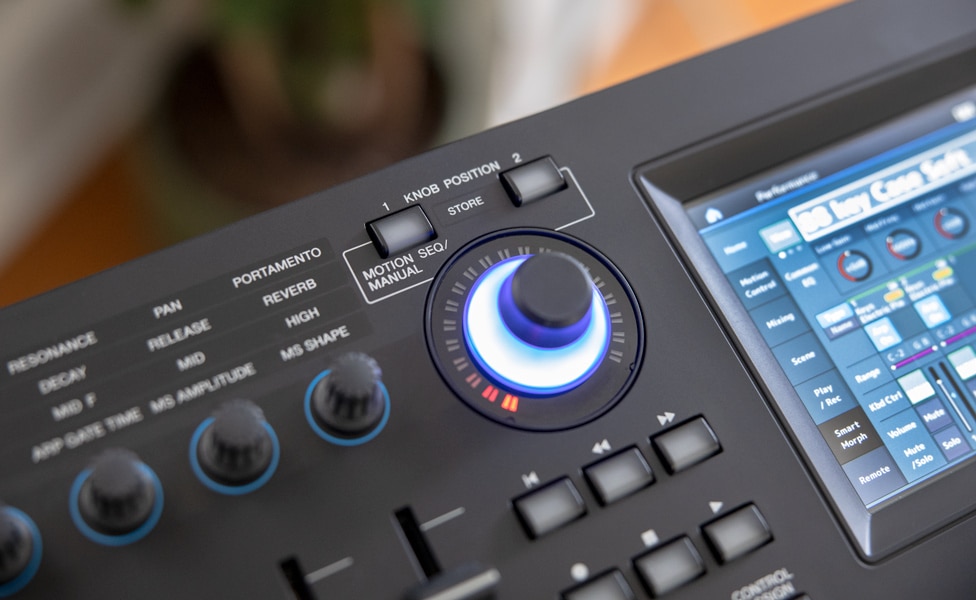
The HUB: That’s pretty incredible. And looking at the effects processing, is there any distinction between which effects can be used with which synth engine?
BA: Every effect is available to any of the engines in the insertion effects. For your readers that have been following MODX and MONTAGE since they first came out, we’ve added like 20 new effects to the system with operating system updates. All those effects we’ve added are part of OS 1.0 on MODX+. And those effects aren't just an additional reverb and another chorus. We’ve added a wave folder effect, we’ve added a dynamic re-modulator. We’ve added “mini” filters that are basically virtual circuitry modeling of classic analog filters of the East Coast synth variety. We added a bunch of cool compressors, like a Unicom compressor. So, yes, all those effects that we've added are available to any engine—as well as the A to D input—so you can apply those to external devices, like guitars or drum machines.
The HUB: One of the big upgrades to the MODX+ from the MODX was that you increased user flash memory from 1GB to 1.75GB. Can you break down for our readers what that’ll mean for them?
Angelos: I think the best way to contextualize it would be to look at three of the free sample libraries we offer on our website. One of them is the Bösendorfer Imperial Collection (free when you register your MODX+). The Bösendorfer Imperial Collection loads 400MB+ of samples into that 1.75GB of onboard flash memory keyboard. The Chick Corea Mark V—that's another 400MB+, which is free as well. And then there’s the CS-80 library at over 450MB. Now, try loading all of those in to the original MODX at the same time. You can’t. They will in a MODX+ though. So, you can load way more sounds. And you still have a whole bunch of memory after you’ve loaded those three free MODX+ libraries. And by the way, that’s the same amount of sample memory now as MONTAGE.
While we’re talking sounds, I do want to take a moment to plug Soundmondo, which is our free social sound sharing site. There are nearly 100,000 free sounds up there for download, made by users, Yamaha product people and even artists. To get those sounds, you connect the MODX+ with your USB cable to the computer. You open up your browser, set up an account on Soundmondo, and you have access to a huge library of MONTAGE and MODX/MODX+ sounds—I think 30,000 for free.
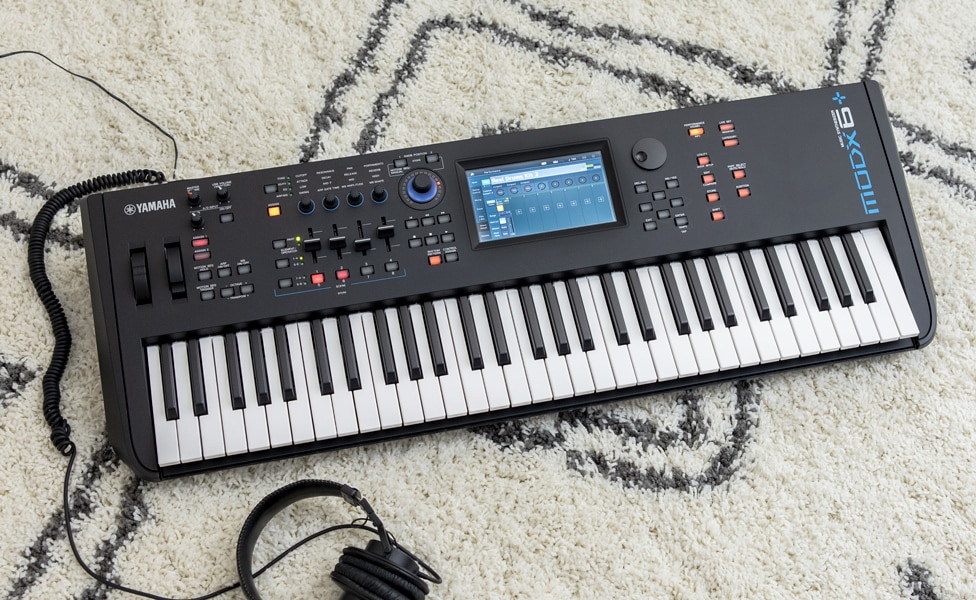
The HUB: Are those sounds sample-based, or are they taking advantage of the existing ROM in AWM2 and the FM-X engine?
BA: Yeah, they’re using the existing AWM2 ROM and FM-X engine. There's some amazing stuff in there.
The HUB: So, speaking of the FM-X engine, you also increased that polyphony from 64 voices to 128 voices.
BA: That’s right, and it makes a big difference. You know, some of the FM-X sounds on MODX were originally created for the MONTAGE, and have up to six to eight parts in the FM sounds in a single Performance. Now, they played fine on a MONTAGE, but on the original MODX, you would hear the polyphony limit hit. If you have an eight-part sound, you play one note of FM-X, and that's eight notes of polyphony. So, that initial difference, where MODX had 64 voices of FM-X and MONTAGE had 128 voices, was a big difference. Well, now, there's no compromise. It's the same polyphony. Those bigger FM-X sounds that have multiple parts will play better. They'll have more simultaneous notes, so you’ll be able to hold your sustain pedal and get more of those sounds.
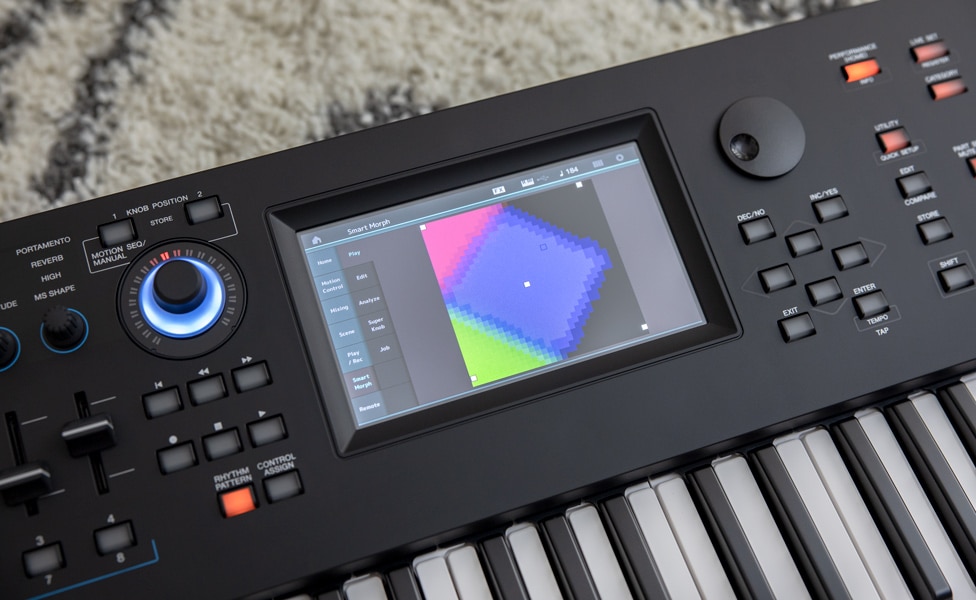
The HUB: Does FM-X have the ability to load in sounds from Yamaha’s legacy FM synths?
BA: For some of them, yes. How it works is you go to apps on the Yamaha Synth site, where you’ll see two apps. One of them is Soundmondo, which we just talked about, and the other one is FM Converter. So, what FM Converter allows you to do is take files from DX7, DX7II, TX-802, TX-216 and TX-816. And what you do is take the SYSEX file of, say, a DX7, and you drag and drop them, hit convert, and it’ll create a MONTAGE user file, which you can load right into a MONTAGE or MODX+.
The HUB: That’s really great, because that opens up nearly four decades worth of sound design to load into your MODX+.
Angelos: Yeah, it’s incredible. I know DX7 owners that have a library of 100,000 sounds, easy. It was such a huge thing back in the day. So, it's insane how many FM sounds there are that are now available to you on a modern system. It's pretty cool.
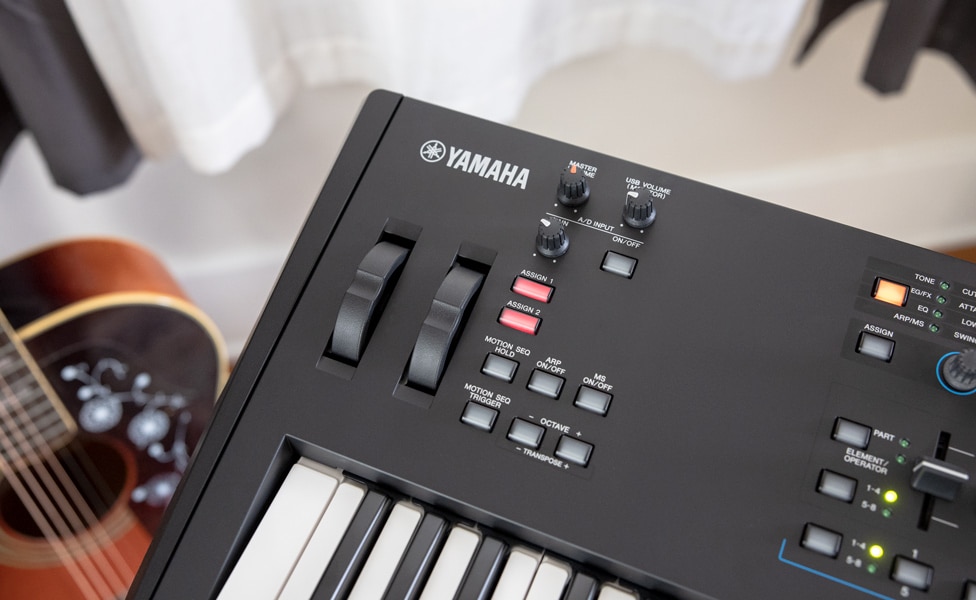
The HUB: In addition to the sample memory increase and FM-X polyphony increase, the other significant change was the mod and pitch wheels, correct?
BA: Yeah, changing from the plastic wheels on the MODX to the rubber wheels that are used on MONTAGE. And that's a funny thing. I was like, “Oh, big deal,” but I had my MODX and MODX+ next to each other, and you reach down, and you feel them, and you really do notice the difference. That tactile feeling is just better. They feel more responsive when you move them. It's a small change, but a big change.
The HUB: Yeah. Just one of those things you take for granted but really makes a world of difference every day.
BA: Exactly.
The HUB: So, we’ve talked a lot about the synth qualities of MODX+, but I wanted to touch on some of the workstation qualities, too. In addition to the fact that you can use it as an audio interface, it’s got some pretty cool onboard sequencing tools, too, right?
BA: Yeah. One of the things we added first with OS 2.0, and then we improved on with the 2.52 OS on MODX (that MODX+ is built on), is the pattern-based sequencer. It has eight different sections. Each of those sections can be up to 256 measures long, or it can be one measure … anywhere in between. And you can have tracks inside those sections, up to 16. Each of those can have individual looping going on. So, you can do some cool stuff.
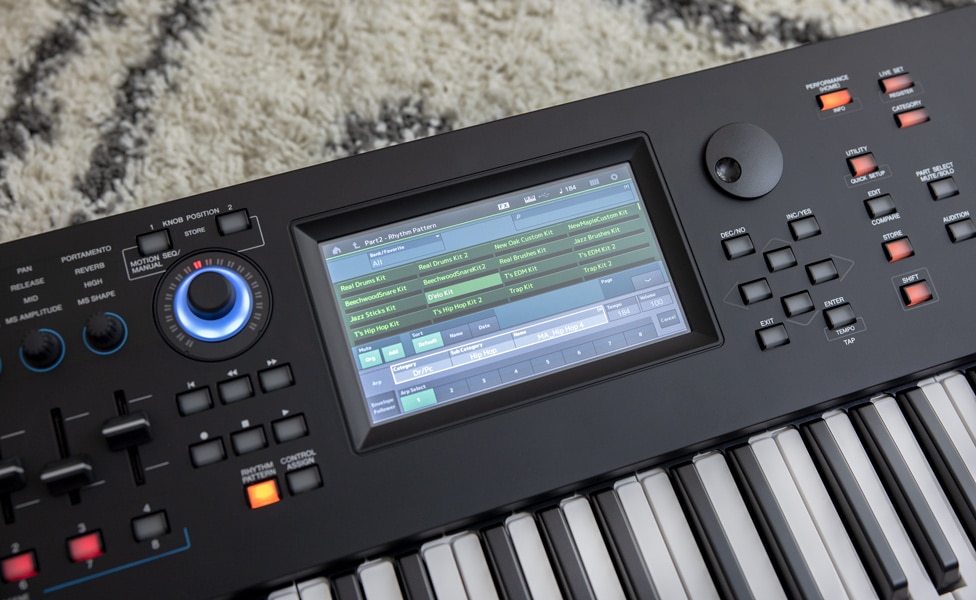
The HUB: That reminds me a little bit—and I know this isn't quite right, but almost—of the different types of clip management in something like Ableton Live.
BA: Exactly. You can say that. As a side note, since you said Ableton Live, the DAW remote functionality on MONTAGE and MODX is great. It has not only transport control, but you get control of switches, faders, etc. And that’s not just Ableton; that’s other DAWs as well. It's really cool.
Anyway, the pattern sequencer also allows you to really drop in and out of record with “record rehearse,” which is great for figuring out your part against the other tracks, and then hitting record when you’re ready. It’s a little like punching in and out. And it’s a really great way to quickly build a sequence, with a bunch of different parts. You jump from one track to another, and never stopping recording. They made it a very flow-based pattern sequencer. That’s one thing.
The other thing I really love about the pattern sequencer is what we call “play effects.” They're basically non-destructive quantized templates, where you can turn on quantizations, turn on swing, turn on the gate rate of just the swung note. It’s really cool. And it's one of the things that I really love about the Yamaha sequencer—it’s really inspiring.
Now, the last thing is that once I have my stuff done in the pattern sequencer, we have a free VST app called MODX Connect, which you can download from our website. And what it allows you to do is drag and drop a pattern that you've created into the DAW that you're working with, and then work in the DAW and add audio tracks there, and maybe add some more virtual instruments or whatever. It captures the Performance. So, whatever Performance you're using—let's say I'm using “Blake's Groove” (it's keyboard, bass, drums and so on)—I do all my sequencing in the MODX+. Okay, I'm ready to do it.
I open up my DAW with MODX+ connected via USB, capture the Performance “Blake’s Groove” with MODX Connect, drag the Pattern sections over to the timeline of the DAW, and there it is. I literally drag and drop the tracks directly into the timeline, and it’s split out onto individual tracks.There's “Blake's Groove.” That's my Performance. And then, I can go to my pattern, and I can see all the pattern sections I have. There's my groove—literally drag and drop that directly in the timeline. It splits it out onto the tracks, and I'm ready to record.
The thing that's cool about that is that once I'm recording the MIDI stuff, if I then want to record each of the three tracks I've made—maybe a drum, bass, key track—I can go into MODX+ and set the USB audio to USB 1 and 2, 3 and 4, 5 and 6, and send those as three separate stems, and record them simultaneously, on their own discreet stereo tracks.
So, that's a good way to think about the workflow. Start, do my sequencing onboard, connect to the computer, capture the Performance, drag and drop my data, fix up my data, maybe add a couple of virtual instruments, then multitrack record the audio of the instrument itself into my DAW.
The HUB: That's pretty fantastic. That is an enormous time-saver, right?
BA: Absolutely. And don’t forget, you can put your MODX+ into DAW remote control mode, giving you hands-on control of all the important things in your DAW.
So, the instrument does many things. It's a tone generator. It's a sketchpad. It's a multichannel USB audio interface, and then you’ve got all these effects. And you can use it as an audio interface.

The HUB: Over the past four years of MODX—and now MODX+—development-wise, what’s really impressed you? What stands out?
BA: Two things. One of them is really about the emulative qualities of MODX+, and one of them is about the of the revolutionary aspects of what it can do as a synthesizer.
For the emulative thing, I'm always blown away by things like the string sections, the woodwind sections, the brass sections and the guitars. I think that we kill in those things. I play guitar parts, for example, all the time with MODX+ and MONTAGE for backing tracks and stuff—and over the last however many years that I've been using it, people have asked me who’s playing the guitar parts. And most of the guitar tracks that we're talking about aren't necessarily lead stuff. They're just background guitar stuff. Doing a distorted guitar thing is one thing. But a super clean chorus guitar sound—it excels at that. And the same thing with the acoustic guitar stuff. It's so good.
From the synth side, I can't say enough about Smart Morph. I have never heard any FM sound that you can do like you can with Smart Morph, and the morphing capabilities that it can do. It changes sounds in this weird, almost visceral way. I don’t know how to explain it. It's so hard to describe what the sound is, but it does not sound like any other synth that I've ever heard. It’s actually using modern machine-learning A.I. It looks at the sound, and it makes decisions based on what it views in the sound, and then maps it out over a 16x16 256 color grid. And you can redo it each time, and it'll come up with a different version. It’s absolutely incredible.





































































































































